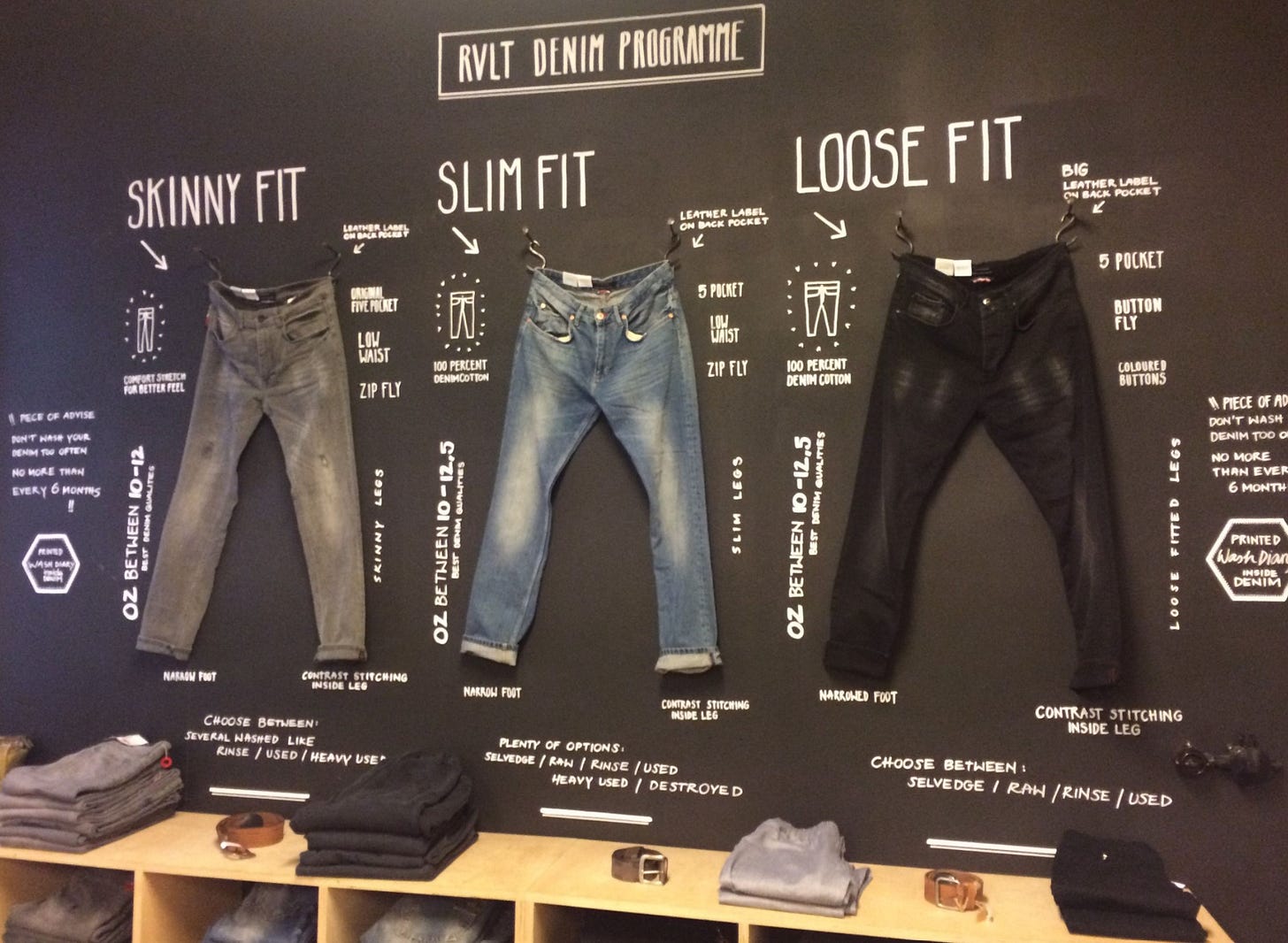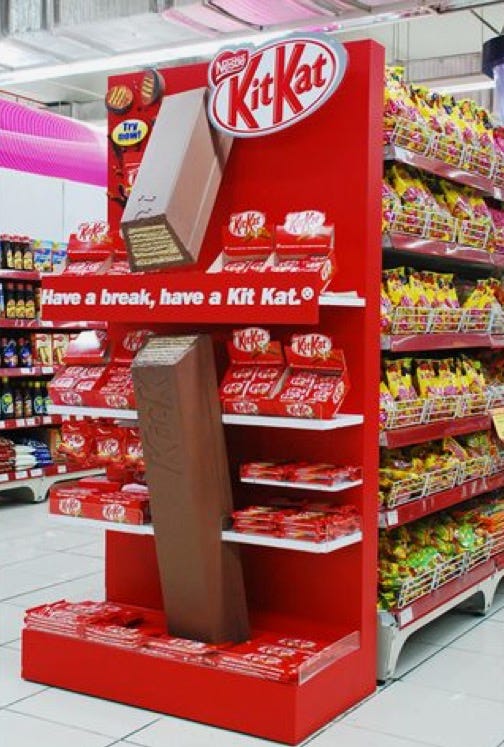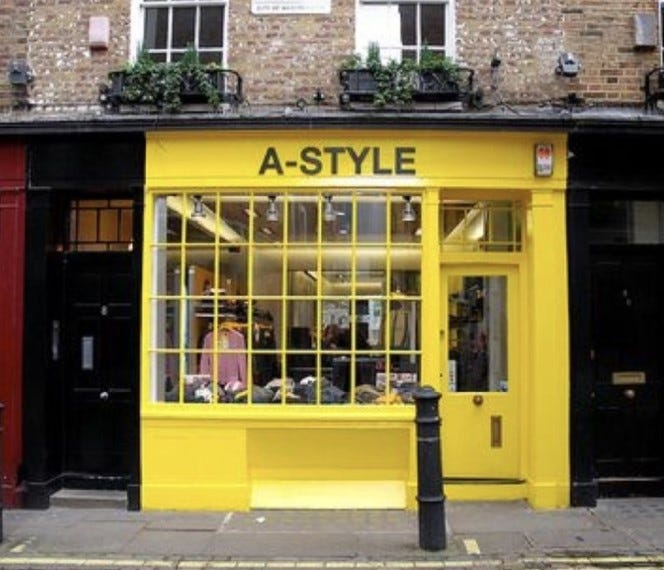Issue #3 All Things Retail: Real Estate, The Clock is Ticking
We could not be more thrilled the positive reactions to the first two issues of All Things Retail. Thanks for the kind words and taking the time to share your thoughts and ideas! We are working hard to provide interesting and actionable content for everyone in the retail business or those simply interested in it. If you believe we are continuing to meet that goal, please share All Things Retail with your friends:
If you have not subscribed yet, you can here:
Real Estate Renegotiation; It’s Time to Act
It is no secret that Covid has turned the retail real estate market upside down (or sideways at least). Stores are closing, tenants need relief, shopper traffic is depressed, buyers are shifting online more than ever, you get the point.
While there are positive indications that customers are coming back into stores and spending nicely (see last week’s retail sales numbers https://www.cnbc.com/2021/04/15/us-retail-sales-march-2021.html), the real estate industry is still working to figure out what the new reality of life will be for them.
This has created an opportunity for merchants to renegotiate current lease deals. Let’s explore how to approach this. But first, a couple of points to keep in mind regardless of your mission:
1) If you don’t ask, you don’t get. Almost any deal can realistically be renegotiated today. This opportunity will diminish over time, especially if retail sales results continue to improve. So, the time is now to move. Identify your goals, develop the “ask” from the landlords and pick up the phone.
2) Landlords are challenged too. The negative financial impact of Covid has hit developers as badly as it has impacted retailers. It’s a buyer’s market now, but that doesn’t mean you will get anything you ask for. Devising a “win-win” approach to your negotiation(s) will help engage your landlords and often will result in better deal terms for you.
Let’s dig in a bit.
Other than a small group of essential retailers, most physical stores merchants have experienced significant sales declines over the past year. Mall, strip, shopping center traffic has and continues to be down versus pre-pandemic numbers. Operating hours have been reduced in many instances, vacancies are up, service levels have declined, and marketing budgets have been cut. All of this creates a scenario ripe for renegotiating your existing lease(s). Begin the effort today:
Gather your numbers for the past year as well as the prior year. Think about that your want to attain from the renegotiation (rent forgiveness for a portion of 2020? Rent abatements if you cannot secure reductions? Rent reductions for the immediate future? Inclusion of value-added lease clauses to your new deal? Extension of lease term to lock in the new terms for an extended period?).
Be sure to understand your break-even revenues and model out a few scenarios, such as current sales, current plus 20%, current plus 40%, 2019 sales, etc. Also do some research of other tenants and determine if they have already been given deals, and if so, what are the specifics.
Based on the above, develop your “ask”, which will be more aggressive than your end goal for the negotiation. Expect a back-and-forth discussion and you should be prepared to reduce your ask (but hopefully not your end goal) during this process.
Your “ask” should reflect what type of rent structure you want to pursue. The low risk “percentage rent” deal (historically these are difficult to get but they are more prevalent now); a base rent plus percentage over a certain sales threshold (the opportunity here is to try for a much lower base; but be careful what break point and percentage you agree to, especially for a longer term lease), or a straight base rent deal (most likely with annual escalation clauses, which also need to be considered and negotiated carefully).
Be prepared to share, at a high level, how far your sales are off versus 2019 with your landlord. This will be the basis for gaining leverage in the discussion.
Every mall, shopping center and urban building needs tenants, it pays the bills for your landlord and chances are a portion of your rent flows into paying off a mortgage or similar debt. So, there is clearly an incentive to monetize your store space, ideally with you since you are already in place. This incentive results in leverage for you.
Be prepared to be told “no” when you make your initial ask. That “no” may include statements such as “we are not restructuring any deals” or “we cannot afford any rent reductions”. Often, this is a normal part of the process. Don’t be deterred.
Begin the true negotiating process by replying something like “the current deal simply won’t work for me. I want to stay and keep paying you rent, but I need your help. I understand this is difficult for both of us, but I need to get a sense of what you can do for me. Can you give me a proposal”? The goal is to get them to put the first offer on the table. By essentially ignoring their “no”, you indicate you are serious about addressing this issue. This is also the time to mention you have heard the landlord has renegotiated other tenant’s deals (if this is true. Don’t disclose tenant names).
Hopefully, an offer will be made. It will be higher than you would like but keep in mind the offer is a positive step, regardless of its details.
It’s time to craft a counteroffer. Expect to go back and forth a few times (in a sense this is a game of Chicken, so don’t give in too soon), therefore choose an updated rent “ask” number that is still above your goal and leaves room for one or two future concessions. If you have also requested new lease clauses, stick to those for now until you get the right rent. They may provide future leverage to get to your rent goal (“I’ll kill the XXX clause if you can take an extra $100 off the monthly rent”).
The back and forth will continue. How can you tell that the landlord will not move any further? This will typically become evident when they say “no” several times to your latest request after a productive back and forth.
Great negotiators like to take the last slice of the pie, sometimes even after agreeing to the deal. This is the “oh by the way, I forgot one additional thing” tactic. Since the negotiating process has gone on for a while, has been productive, and the landlord is feeling better that they are retaining you as a tenant (even though you probably never outwardly threatened to leave), your chances of getting a “yes” to one, final, “oh by the way…” ask is pretty high. Try it.
Every negotiation is different, and each will be impacted by the personalities of the participants. The overview above is meant to provide an outline of the process, but it’s important that you adjust to the nuances of the person you are negotiating with. Put yourself in their shoes and try to understand their goals. Design your approach to reflect that understanding as well as their personality, and your likelihood of success will improve.
Beyond rent, here are some other elements of a lease you should consider in your renegotiation:
CAM (common area maintenance) fees, which can be quite significant. If you cannot get these reduced, perhaps you can add services that are not currently included to save you costs elsewhere (for example, adding trash removal if it’s not currently included).
Marketing fees. These are more flexible than CAM and can often be eliminated or dramatically reduced. Again, be sure you are clear on what the landlord is providing in return for these fees.
Utilities are often “pass-through” costs if they are not directly billed to you. Other than maintaining the right to audit, it’s probably not worth spending much time on this.
Taxes and insurance. Triple Net (NNN) leases put the burden for these and CAM on the tenant, so be sure you factor each expense as you model your profitability and break-even sales. You can attempt to secure a cap on these expenses.
Lease term. The longer the lease, the more negotiating leverage you have. But you need to be a believer in the location for today and for the future. Otherwise, keep the term shorter or include a “kick-out provision” to protect your downside. Short term leases today are 1-2 years and long- term leases are 3-5 years. Don’t go over 5 years unless it’s through an option.
Kick-out provision. This is usually included in longer term (3+ years) leases and allows the tenant the option to exit the lease with no further obligations if sales revenues in a pre-defined period do not meet or exceed an agreed upon level. This is a great insurance policy and should be included in every deal if possible. Landlords may ask for a “mutual kick-out”, which means if you do not attain that predetermined sales level, they can terminate your lease as well. Try to avoid this type of provision but the insurance for you may warrant accepting the “mutual” version.
Co-tenancy clause. This allows you to terminate the lease if an anchor tenant or a certain percentage of tenants leave and are not replaced within a certain timeframe.
Tenant improvements. Although this is more typical for new locations, the landlord may be willing to contribute money or labor to upgrading / remodeling your store.
Use Clause/ exclusivity provision. This controls what you and other retailers can and cannot sell from your location. Therefore, you may want to adjust your Use Clause (try to broaden it for flexibility) and add exclusivity rights (to limits others from selling products in the same category).
Security deposits. Many businesses are experiencing general working capital pressures. To that end, you may be able to negotiate a reduced security deposit and free up some cash.
There are obviously a bunch of moving parts here. The process takes time, patience, and focus. But a successful renegotiation can take a store from a money-loser to profitability, or from slightly profitable to very profitable. I have seen deals like this agreed to over the past several months, so if you haven’t tried to secure better lease terms, start now. This opportunity will not last for very long.
Retail News & Happenings
Retailers Embrace Livestreaming, Market Expected To Reach $11 Billion In 2021
Consumers Spent $32 Billion on Apps in Q1 2021— the Biggest Quarter Since Records Began
Case study: Walmart Embraces Immersive Learning
Virtual reality is revolutionizing the way the retail giant’s associates learn.
https://www.chieflearningofficer.com/2021/03/23/case-study-walmart-embraces-immersive-learning/
How Biden’s Infrastructure Plan Impacts Retail
Nike Heads List of 50 Most Valuable Brands
The Brand Finance annual report on the most valuable and strongest apparel brands
https://brandirectory.com/download-report/brand-finance-apparel-50-2021-preview.pdf
For Supermarkets and Big Box, a Change of Scene in Design
About 80% of shopping is still in store, so store design still matters a lot
Google Aims to Be the Anti-Amazon of E-Commerce. It Has a Long Way to Go.
https://www.nytimes.com/2021/03/27/technology/google-shopping-amazon.html
14 High-Converting Product Page Examples (and Why They Work)
Two-thirds of the Largest U.S. Retailers Use Content Marketing
https://www.practicalecommerce.com/two-thirds-of-the-largest-u-s-retailers-use-content-marketing
Social Media Lead Generation: Tips And Tricks For 2021
Top Brands on TikTok Up Their Activities
https://www.marketingcharts.com/digital/social-media-116792?mc_cid=533c0bc29f&mc_eid=8ff41777b2
Cool Pics











